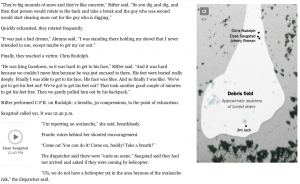By GABRIELLA SHOFER
Over the weekend, news reports surfaced detailing the arrest of the renowned graffiti artist, Banksy. The online news reports were very detailed, referencing sources and being displayed on reputable news websites. In order to cement their credibility and the authenticity of articles, news reporters utilized multiple sources and a traditional news layout to provide information to readers. Thus, I was not prompted to question the authenticity of the article that was published on the U.S. website National Report.
The article gained heightened traction as it spread through social media over the weekend. The prank managed to convince thousands of social media users, with his name trending on both Twitter and Facebook. The reports claimed that the pseudonymous British street artist, whose graffiti artworks have appeared around the world and often have an underlying political motive, was charged by London’s Metropolitan Police for vandalism and his identity was revealed. However, these reports were falsified on Monday morning when the artist’s publicist, Jo Brooks, confirmed that the arrest was a hoax.
This story conjures a number of critical issues that currently plague the news industry, particularly in relation to the online nature through which many individuals now receive their news. It brings forward the question of the role of social media in spreading the news in a truthful manner. With many people relying on social media and the Internet as a source of news information, it is increasingly frightening for society the more that these types of fake articles emerge.
As more reports have developed that reinforce that the original article was a hoax, the increasing difficulty for readers in determining which sources they can trust is ever-present. Is it the readers’ responsibility to check the sources quoted in articles? It appears that this is the only way to ensure that the news we are reading is accurate, yet this is impossible for every reader to execute. Instead we will continue to trust the news outlets that provide us with the latest information on activities around the world.
Perhaps we just need to remain aware and look out for any possible fabrications before wholeheartedly believing what we read.

![image[2]](http://students.com.miami.edu/reporting/wp-content/uploads/2014/10/image2-300x187.jpg)
